Animal Obesity
Obesity, or an excess of bodily fat, has become a widespread problem in animals in recent years. Apart from affecting their overall health, it can also limit the life span of animals. Serious health problems, including osteoarthritis, heart disease, diabetes, respiratory problems, high blood pressure, and cardiovascular disease, may occur in such animals. Obesity is typically caused by excessive caloric intake and inefficient energy utilisation. Overfeeding and lack of exercise are the most common causes, however disorders like hypothyroidism and insulinoma can also induce obesity in animals. Obesity is the most common form of malnutrition in small animals, and it is also one of the most common conditions seen in veterinary practise. Overweight animals who lose weight live longer, have more vigour, and have less pain. According to estimates, at least 25% to 30% of dogs and cats in industrialised countries are obese. Because of the high frequency of overweight animals, clinical measures to treat and prevent this nutritionally sensitive condition are necessary.
- Cause
- Consequence
- Prevention
- Treatment
- Obesity and Associated Diseases
- Morbid Obesity
- Lifestyle of Animals and Owners
- Obesity and Weight Loss
- Malnutrition

Marco Polettini
DVM, Italy
Andreia Freitas
INIAV/REQUIMTE, Portugal
Andreia Freitas
INIAV/REQUIMTE, Portugal
Kedibone Gloria Kgosana
Sefako Makgatho Health Sciences University, South Africa
Nnenna Ugwu
Anglia Ruskin University, United Kingdom
Rubens Dias de Melo Junior
Universidade Federal de Goiás, BrazilSubmit your abstract Today
Important Alert:
X


Title : Analyzing veterinary medicine residues in food: A comprehensive guide
Andreia Freitas, INIAV/REQUIMTE, Portugal
Title : Quantifying changes in facial expression following hot-iron disbudding under procaine hydrochloride and meloxicam treatment in Holstein dairy calves
Nnenna Ugwu, Anglia Ruskin University, United Kingdom
Title : Trypanosoma vivax in and outside cattle blood: Parasitological, molecular, and serological detection, reservoir tissues, histopathological lesions, and vertical transmission evaluation
Rubens Dias de Melo Junior, Universidade Federal de Goiás, Brazil
Title : Characterization of porcine rotaviruses in the Czech Republic
Romana Moutelikova, Veterinary Research Institute, Czech Republic
Title : Determination of Circulating Foot-and-Mouth Disease Virus Serotypes in Kenya (2023)
Hellen Mutua, Foot and Mouth Disease National Reference Laboratories, Kenya
Title : Welfare for Amazonian wild animals
Eliane Cardoso Carvalho Moraes, Jungle Warfare Training Center/ Army, Brazil